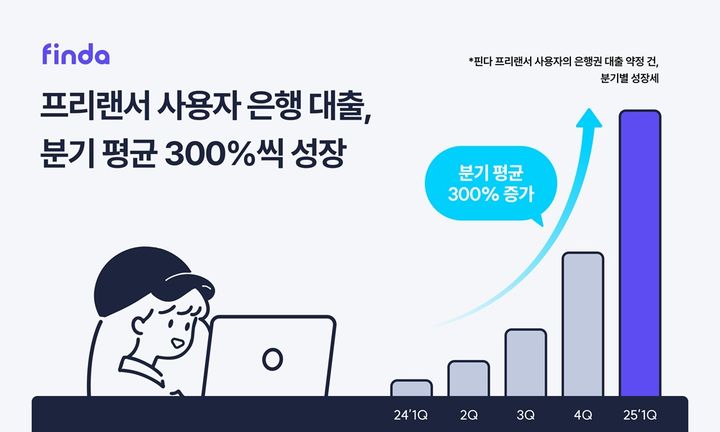AI Loan Platforms Offer Financial Lifeline to U.S. Freelancers Facing Income verification Hurdles
By Archyde News Service
The rise of the gig economy has brought adaptability and chance to millions of Americans, but it has also created new challenges when it comes to accessing traditional financial products. Freelancers, who ofen experience fluctuating incomes, are finding it arduous to qualify for loans and credit lines from traditional banks. Though, a new wave of AI-powered loan comparison platforms is emerging to bridge this gap, offering choice credit scoring models and customized products to meet the unique needs of the self-employed.
The situation is not unique to the U.S. As evidenced by the experience of a South Korean freelancer, identified only as Mr. A, the problem is global. Mr. A, “making money as much as office workers for three years,” faced rejection from multiple banks due to his inability to “prove income” amid market fluctuations. He eventually secured a loan through Finda, an AI loan comparison platform.
The Freelancer Funding Gap
Traditional lending models heavily rely on consistent income and employment history, criteria that many freelancers struggle to meet. According to a recent report by the Freelancers Union, nearly USD$1 trillion was earned by freelancers in the U.S. in the past year, highlighting the important economic contribution of this workforce. Despite their earning power, many freelancers face barriers to financial services.
One major hurdle is income verification.Unlike salaried employees with regular pay stubs, freelancers’ income can vary considerably month to month. This makes it difficult for traditional lenders to assess their creditworthiness. Many freelancers rely on personal loans to cover expenses during leaner months or to invest in their businesses, so lack of access to credit can significantly impact their financial stability.
AI Loan Platforms: A New Approach
AI loan comparison platforms are stepping in to fill the void, offering a more nuanced approach to assessing credit risk.These platforms leverage big data and alternative credit scoring models to evaluate freelancers’ financial profiles beyond traditional income verification. They analyze factors such as payment history, client relationships, and even social media activity to paint a more complete picture of their creditworthiness.
According to Finda, its “AI loan comparison platform Pinda request (App)’s freelancer users grew by 300% for the last year.” This surge suggests a growing demand for these alternative lending solutions among freelancers.
Finda also claims to have “more than tripled the banking product lineup to provide freelancers with good conditions for the past year,” including expanding “the approval conditions of the policy loan products with good interest rates to individual business owners and freelancers.” As a result, the company says that from the first quarter of last year to the first quarter of this year, “the number of loans received by freelancers increased by 305.7% every quarter” and “the amount of contracts increased significantly by 389.2%.”
Seo kwan-soo of Finda notes that they are “continuously increasing the number of customized products for the so-called thin filers, which have not been able to scope of recognition income in existing financial sectors, such as freelancers, which are estimated at about 4 million people.” They plan to “use the alternative credit rating model (ACSS) to help you receive loan approval even if you lack financial transaction history.”
Case Study: Finda’s success with Freelancers
Finda reports that its “freelancer users were also borrowed from good conditions without other job groups. The average interest rate for emergency loans of the commercial banks, which was contracted, was 6.20%,which is lower than the average interest rate of 6.22%.” The company also claims that “the limit was higher than the entire users (KRW16.24 million won).” While this example originates in South Korea, the underlying principles are applicable to the U.S. market.
Finda’s success highlights the potential of AI loan platforms to empower freelancers financially. By offering tailored products and flexible approval processes, these platforms are helping to level the playing field and provide access to capital for a growing segment of the workforce.
Potential Drawbacks and Counterarguments
While AI loan platforms offer promise,they are not without potential drawbacks. One concern is the lack of transparency in their credit scoring models. Critics argue that these models can be opaque and difficult to understand, making it challenging for freelancers to no how to improve their creditworthiness.
Another concern is the potential for bias in the algorithms used by these platforms. If the data used to train these algorithms reflects existing biases in the financial system, they could perpetuate discriminatory lending practices. Though, proponents argue that AI can also be used to identify and mitigate these biases, leading to fairer and more equitable lending outcomes.
The Future of Freelancer finance
As the gig economy continues to expand, the demand for innovative financial solutions tailored to the needs of freelancers will only grow. AI loan platforms are poised to play a significant role in shaping the future of freelancer finance,offering a more inclusive and accessible lending landscape. However, it is crucial to address the potential drawbacks and ensure that these platforms are obvious, fair, and accountable.
FAQ: Freelancer Loan Options
| question | Answer |
|---|---|
| What are the main challenges freelancers face when applying for loans? | Irregular income, difficulty proving income, and lack of traditional employment history are major obstacles. |
| How do AI loan platforms help freelancers get approved for loans? | They use alternative credit scoring models, analyze a wider range of financial data, and offer customized loan products. |
| What are the potential risks of using AI loan platforms? | Lack of transparency in credit scoring models and potential for algorithmic bias are concerns. |
| What can freelancers do to improve their chances of loan approval? | Maintain detailed financial records, build a strong credit history, and explore SBA resources. |
| Are interest rates typically higher or lower through AI platforms compared to traditional banks? | According to Finda, the average interest rate for emergency loans offered to freelancers was sometimes lower than the average interest rate of traditional banks, depending on the loan type and individual circumstances. |








